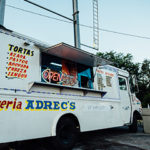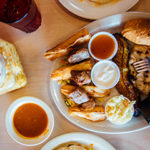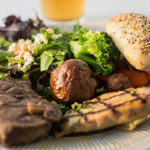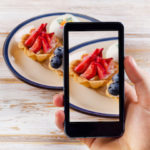
When it comes to drinking water these days, the choices are many. Coconut water. Cucumber-infused water. Water that’s been “filtered up to 300 years through layers of ignimbrite rock.”
Wait … what? That last note, which describes a New Zealand mineral water on the 20-bottle “water menu” at Ray’s and Stark Bar in Los Angeles, doesn’t seem connected to anything an attendee might sip at a meeting — unless, maybe, they’ve convened at the Merchant Hotel in Belfast, which also has its own premium water menu. With newly opened water bars in London, Sydney, and San Diego, infused waters in almost every hotel lobby, and some hotels installing sparkling-water filling stations on each floor (as they do at Burlington’s Hotel Vermont), is it far-fetched to think that the water scene at meetings might look much different two, five, 10 years from now?
“At the end of the day, water is very important to attendees, and I believe that will not change,” said Kate Strause, CMP, CTA, associate director of sales for the Henry B. Gonzalez Convention Center in San Antonio. Although the center usually only fields sparkling-water requests for smaller, premium meetings, its offerings have grown in response to demand. “Planners are working at getting away from individually bottled beverages and they are turning to bulk items,” Strause said. “We continue to try to find interesting, cost-effective, and environmentally friendly ways to provide this basic necessity.”
The combined effects of water shortages, distaste for bottled-water waste, and increasingly beverage-savvy attendees have spurred many venues to research new methods of delivery. At the International Convention Centre Sydney, scheduled to open in December, Director of Communications Samantha Glass suggests future delegates might encounter some unique offerings when it comes to H20. “We are in the process of working through our ESD [education for sustainable development] and CSR programs,” Glass said, “and drinking/bottled water is an important part of that strategy.”
Reimagined water service is likewise central to menu planning at Mexico City’s Expo Bancomer Santa Fe. “We are working to have new ideas about service, and to reduce the use of bottles,” said Luis Diaz, Expo Bancomer’s commercial director.
They have a lot to choose from. Today, the three-plus glasses of water per day that planners like to offer attendees provide ample opportunities to get creative.
BEYOND INFUSIONS
At the Henry B. Gonzalez Convention Center, which unveiled a $325-million renovation and expansion this spring, water service has migrated from individual bottles to increased reliance on bulk chilling units and water-bottle refilling stations — as it has almost everywhere else. The center’s F&B team has also been upping the ante on infused waters. “We’ve been most successful with strawberry-basil, cucumber-mint, and basic citrus,” Strause said. “I’m also experimenting with an upcoming group with grapefruit-rosemary-cucumber and lemon-cilantro waters.”
But it’s the center’s twist on water service that offers a glimpse into how local culinary traditions can be harnessed to create unique experiences. Agua fresca — Spanish for “fresh water” — is a refreshing, nonalcoholic blend of water, fruit, and sugar, sometimes infused with flowers and herbs. “We do just about any flavor you can imagine,” Strause said. “We are lucky in San Antonio that we have such great local flair to offer, and I would definitely say this has increased significantly in the last two to three years.”
An expanded range of infused and flavored waters can also be a revenue stream as planners move away from bottled water. “Some [venues] are charging $5 a pitcher for water, because they’re concerned about their lost revenue,” said Nancy Zavada, CMP, founder and director of the sustainable-events consultancy MeetGreen, who tries to negotiate water costs out of contracts but recognizes the opportunities they present.
For proof that more options equal more sales, look to Ray’s and Stark Bar: After the restaurant began offering its water menu back in 2013, water sales surged by 500 percent, according to Martin Riese, the restaurant’s “water sommelier.”
PUT A LOGO ON IT
As water becomes more of a premium service, its delivery creates an unexpected boon for suppliers. “We’re seeing [water] at conferences as an opportunity for people to sponsor the water stations, which is a fabulous idea,” Zavada said. “Whenever you can come up with a sponsorship opportunity for something green, it’s great.”
Branded reusable water bottles have been ubiquitous at meetings for a while. In San Antonio, the catering staff has even wrapped water chillers in branded sheaths. A pitcher of flavored water offers a subtler but no less potent branding opportunity. “We do see that planners are looking to serve a specific color of beverage to fit a theme or a logo color,” Strause said. “I recently had a large conference that was looking for a red nonalcoholic beverage that matched a sponsor’s logo. Watermelon agua frescas turned out to be the perfect fit, but we do almost any flavor you can imagine.”
Other ideas for flavoring waters? Maple syrup, fennel, even Skittles, which dissolve quickly in water and paint it in bright, cheerful colors. But when an elegant, no-fuss sparkling water is what’s called for, maybe go for one that is — in the words of Riese — “creamy on the palate, with a slightly salty taste, and well-balanced with acidity to give an overall refreshing, thirst-quenching feel.” A.k.a. San Pellegrino.




